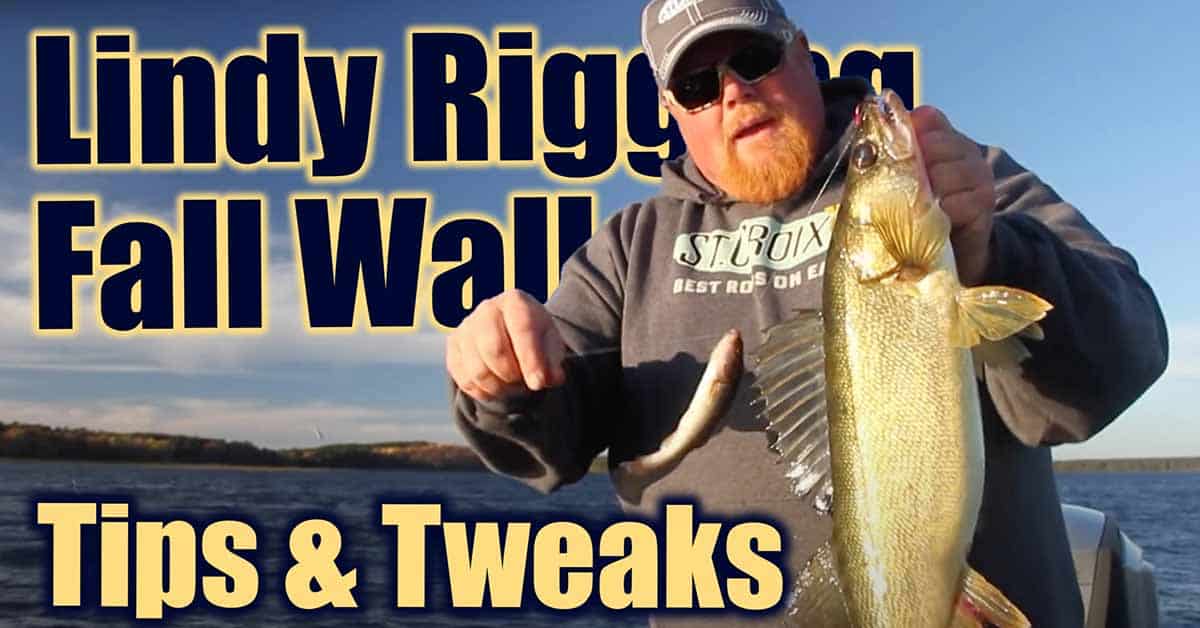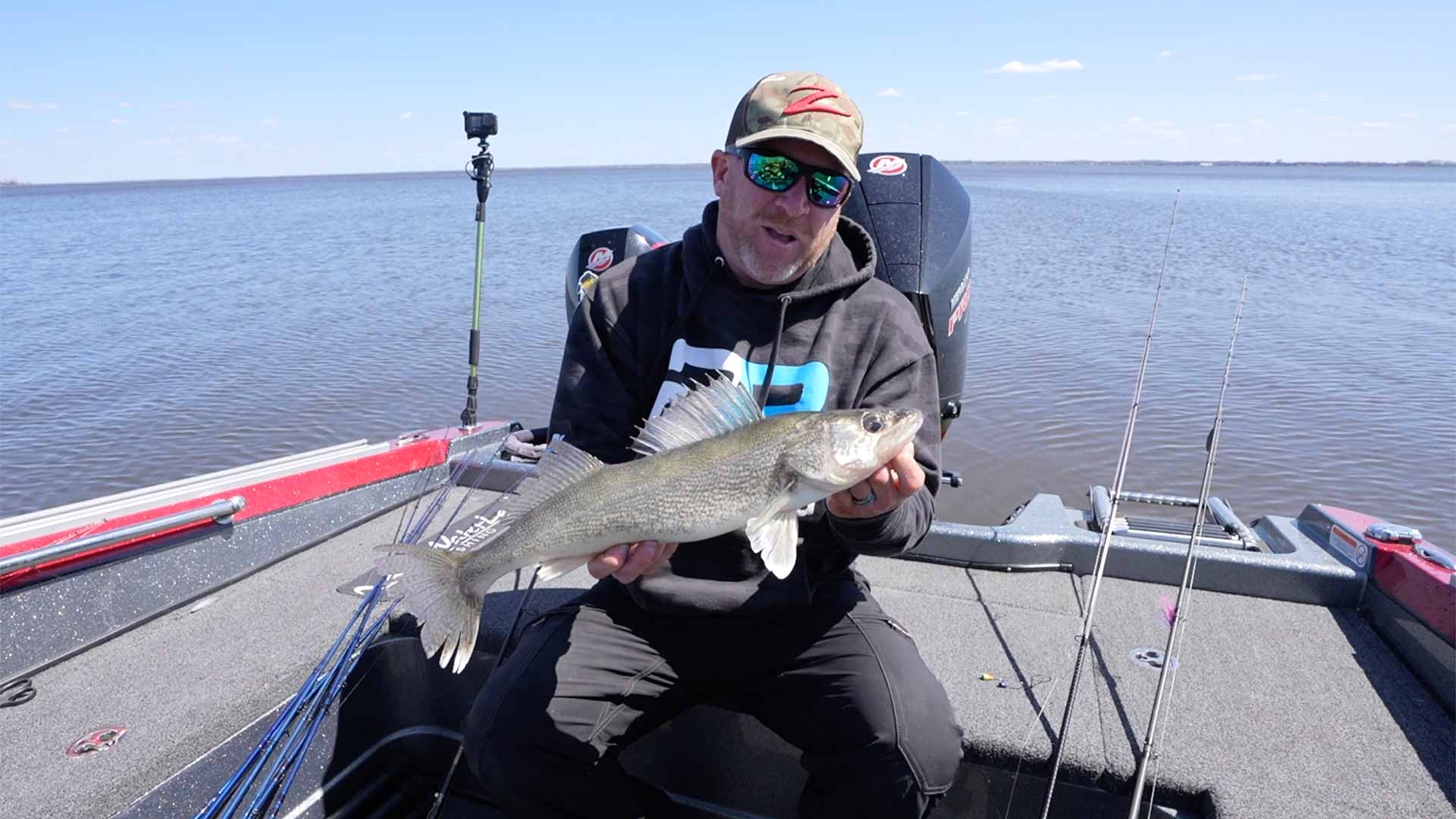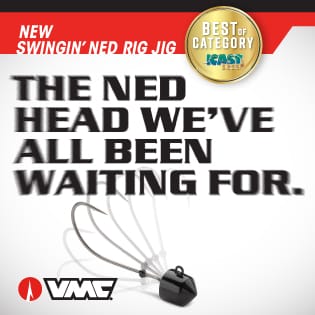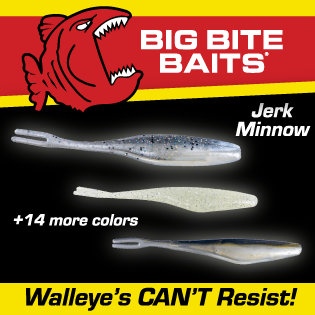Brian Brosdahl shares a few tips on Lindy rigging fall walleyes and shows off a unique livebait rig that he likes to use for fall walleyes, particularly in snaggy areas that feature a bunch of rocks. He also shares a few tips on Lindy rigging fall walleyes!
Lindy Rigging Fall WALLEYE: Tips & Tweaks
It’s common knowledge you catch big fall walleye rigging big minnows and chubs.
Post-turnover—when dissolved oxygen is more evenly dispersed throughout all depths—walleyes can be literally anywhere. A majority of anglers still target steep breaks, sunken islands, points, etc., but Minnesota guide, Brian “Bro” Brosdahl is fond of fishing shallower.
“A majority of my fall walleye rigging is done in 10’ and less,” says Bro. “Especially around rock, from softball- to Volkswagen-sized boulders to jagged shield rock. On rivers, you’re talking submerged rip rap, wingdams, and other soft-to-hard bottom transitions.”
The problem rigging around rock—or any kind of hard cover—is getting snagged. Conventional weights like egg sinkers and bottom bouncers are easily wedged.
Over the years, Bro’s experimented with numerous ways to minimize snags, including the use of small, slender bullet sinkers to the moldable putty weight used by fly anglers. Ultimately, the system he arrived at shares some likeness to the multiple split-shot rigs used by steelhead anglers.
In a nutshell, what Bro does is run a 3’ – 4’ 8-10 lb. fluorocarbon snell with tiny split shots paced about 8” apart all the way from a quality ball bearing swivel down to a Gamakatsu Finesse Wide Gap hook. In areas with vegetation and rock, he uses the same hook with available weedguard.
He fishes the rig on a 7’ 6” medium-power, fast-action St. Croix Legend Xtreme rod (LXS76MF) paired with a Shimano Stradic 2500 spooled with 10 lb. braid.

“One split shot won’t do it, but several will. What you’re doing is turning your fluorocarbon leader into a chunk of lead core. But unlike lead core, a series of small split shots doesn’t spook walleyes in clear water. In fact, on some waters the sound of multiple split shots tickling rocks can help attract fish.
“Sometimes I’ll add a bead or two above the hook for added bling and sound. The nice thing about the system is even if one gets stuck it either pulls down the line or completely off. So, I always carry a bunch of split shots, which are cheap. Most of the time you’ll feel them tickling the rocks okay. When you’re in round rocks you don’t typically snag because there aren’t many imperfections. Granite and shield rock are the tough ones; they have cracks that your line can thread or grab. Same around wood. But the split shots typically work through all of it pretty well,” says Bro.
Along these lines, perhaps the biggest mistake anglers make rigging live chubs or other big minnows is thinking you need to ride the bottom at all times. “Walleyes will move pretty far off bottom to grab a big minnow. If you’re in 5’, you only need your rig 3’ to 4’ feet down; and if you’re in 10’, 5’ down is usually plenty.”
Bro studies his electronics to determine where walleyes are at in the water column — whether they’re bellied into bottom or slightly raised, suggesting active feeding.
In terms of how he’s fishing it, he says it depends on the wind and fish location. Bro will deploy the rig on a controlled drift, a slow troll, or Spot-Lock with his bow into the wind, pitching the rig downwind to pods of fish he locates on his electronics. In the case of pitching, he’ll often go down to a shorter, 2′ snell.

Setting the Hook
Bro encourages anglers to use the first couple bites to determine the best hook-setting procedure. “If you get a bite and you pull on it and the fish is already hooked, you know they’re eating it. Don’t overfeed the fish. There’s no reason to pull their butthole out the mouth. Most of the time. I’m feeding them line five to 10 seconds. The only exception is if I’m using giant chubs — then I’ll give ‘em a bit longer.”
Bro continues: “When I feel a hit I’ll feed line, then I’ll check before I set the hook, pulling the chub a little bit – maybe a couple short pulls so the walleye eats it a bit more. I call this the ‘tease.’ Teasing walleyes a little bit really gets them to commit. Big walleyes are like ‘give me my steak back!’ Even in tournament situations when I watch guys feed fish for minutes, all it takes is a little tease.”
The exception is rigging during extreme high-pressure situations when the tease can turn some walleyes off. “If they don’t eat after the tease, they’re typically small fish. But bug the big fish and they’ll gobble almost every time, even during post-frontal conditions.”
Bait Choice and Care
Fact is, chubs ain’t cheap — and they can dirty water fast. Proper live bait care makes the most of the investment. I always keep my chubs in fresh water with a bubbler.
In tournament situations I’ll also add some U2 G Juice, which prevents ammonia build up. It also contains electrolytes, which is like Gatorade for bait. When transporting back and forth with well water, I’ll actually feed the chubs small hunks of ‘crawlers to keep ‘em full of fighting energy.”
As to the debate of creek chubs vs. redtails, Bro says each has its place.
“On waters connected by rivers with native redtails, seems like redtails work better. But creek chubs seem to be way more active and catch fish everywhere.” Both are great options for fall walleye rigging.
Where legal, catching your own chubs can be fun and cost effective. “Chubs have a bigger mouth than most minnows and are easy to catch on ice fishing jigs like a Northland Gill-Getter or Mud Bug.
Another tactic is to take small hook, tear a maggot with the tip of the hook and thread it on. Be careful: If you do it wrong, it’ll explode on your shirt. Or it’ll pop back off like it’s made out of rubber. But I like maggots over waxies; chubs can lick off a waxie in no time. Put one or two maggots on a hook and they last longer because creek chubs can’t rip ‘em off fast.”
And what to do if your bait shop doesn’t carry chubs — or restrictions prevent catching, transporting, and using your own?
“Medium suckers will work when fish are hungry. It’s a big minnow and they draw a lot of attention. Any bigger minnow is preferred as opposed to micro minnows. Even rigging a really large golden shiner can work well. Any lively, big meat on a hook will catch fall walleye rigging if you put it in the right place.”










